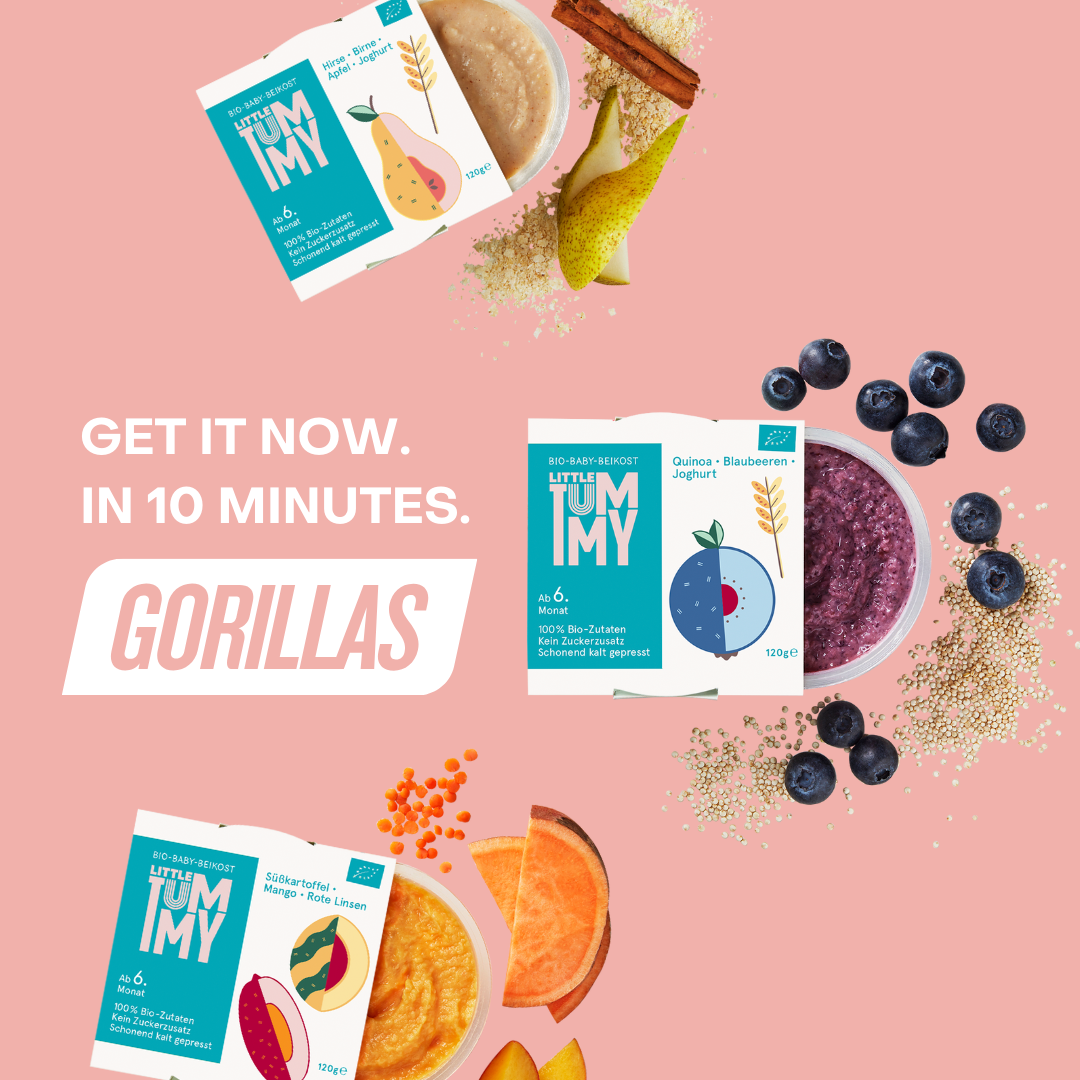
Little Tummy bei Gorillas in Deutschland erhältlich
Tolle Neuigkeiten für unsere Eltern in Deutschland: Du kannst Little Tummys frischen Bio-Babybrei jetzt bei Gorillas bestellen!
This is a more traditional way for introducing solids. Food is prepared as a smooth puree and fed with a soft spoon. Gradually, you will change the texture of the meals. Instead of pureeing them to a smooth mass, you can just mash the ingredients, which makes the meal thicker and lumpier. This enables your baby to develop their chewing skills step by step until they chew bigger pieces.
Spoon-feeding is suggested to be a smoother way to transition from milk feeds to solids. It also helps you stay on top of what your baby eats and most of the time there is less mess on the table.
On the other hand, preparing purees can be time-consuming and/or costly, if you decide to buy all your purees in store. Adversaries also argue that spoon-feeding doesn’t let your baby decide what and when to eat. As with everything, the truth lies somewhere in the middle. Spoon-feeding can be a convenient way to introduce solids and to expose your child to a variety of flavours. Make sure you feed your child responsively at all times, meaning feed him when he is hungry and stop when he shows cues of satiety. You can find more information on responsive feeding on our blog.
Finger Foods or Baby-Led Weaning
Baby-Led Weaning (BLW) has become more popular in recent years. It means that you choose what your baby will eat but he chooses how much and how quickly he will eat it. The great thing about BLW is that finger foods are usually easy to prepare and it is a good way to let your child participate in family meals. Skills such as hand-eye coordination are trained and your child will be more independent in the way he feeds himself.
On the other hand, baby-led weaning can be time-consuming if your baby is more interested in playing with food rather than eating it. It can also turn into quite a mess as most of the food might land on the floor. Some parents are concerned about choking when feeding bigger chunks to their baby. But you don’t have to worry: Your little one is smart and his natural reflexes will prevent him from choking, even if he tries bigger pieces of food.
Which method is the right one for me?
Only you and your baby can (and should) decide, which is the right method for you. Some babies will only eat pureed food and struggle more with textures. Other babies want to explore everything themselves and will not accept anything presented on a spoon.
Most parents end up with a mixture of both. For example, they spoon feed porridge for breakfast but offer finger foods as a snack or for lunch. This way, you can find which method works best for you and your little one.
Whichever method you go for, keep in mind that starting solids with veggies is the best way to introduce healthy eating habits. Also make sure that you introduce iron-rich foods from the beginning, such as beans and lentils, green leafy vegetables and oats.
✕